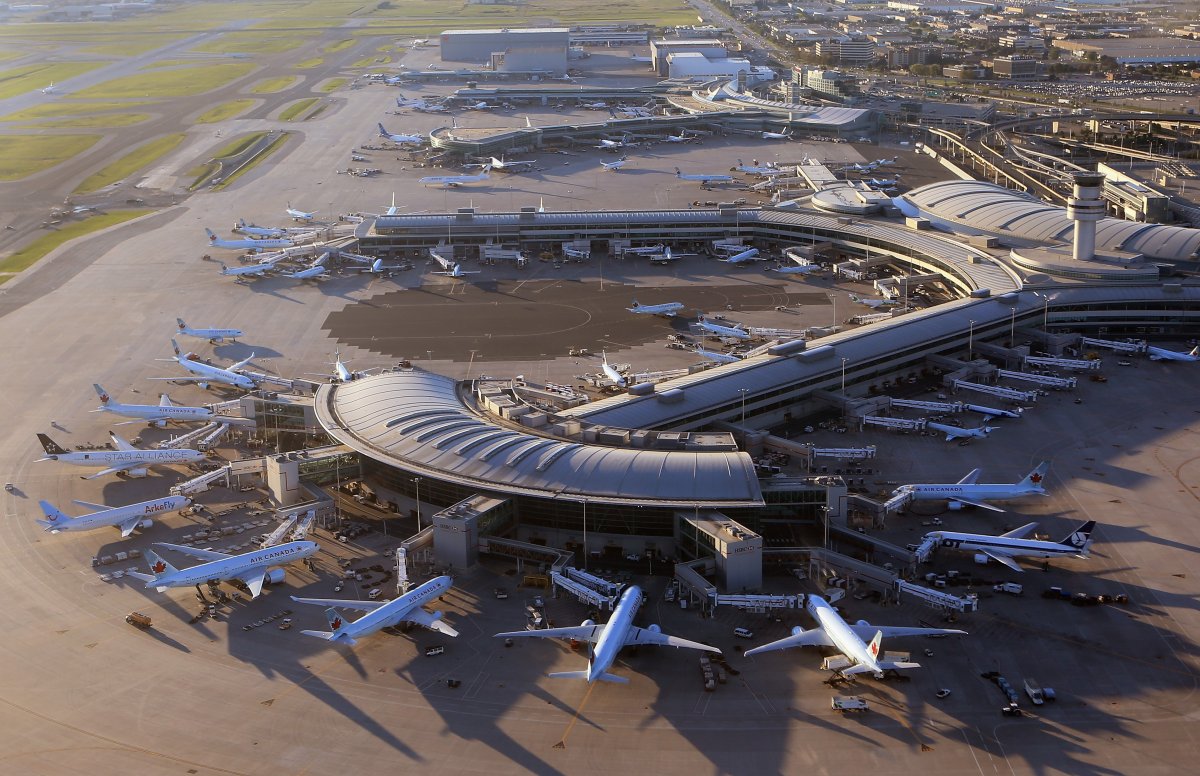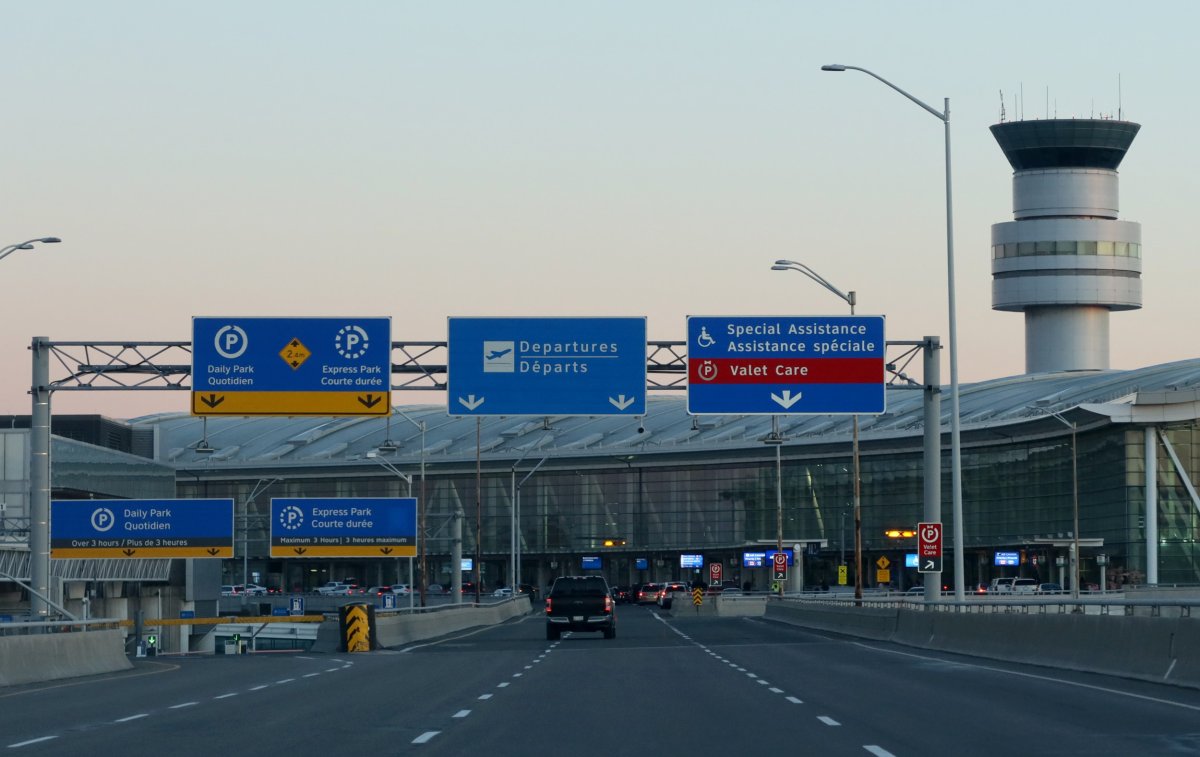A pilot declared a "mayday" emergency and was forced to make a midair U-turn when an electrical fire broke out inside the cockpit.
The incident happened on board an Endeavor Air jet with 74 people on board that had left Pearson Airport in Toronto, Canada, bound for New York's John F. Kennedy International Airport on February 3.
The potentially life-threatening situation was revealed in an audio clip of the pilot's urgent request for help. It was uploaded recently on an aviation social-media channel.
"The quick and collected actions of the Endeavor Air flight deck crew demonstrate how safety is ingrained in all that we do," an Endeavor Air spokesperson told Newsweek. "We apologize to our customers for the delay in their travel plans on Feb. 3."

Technicians later replaced the aircraft's windshield and windshield heating unit, while the Transportation Safety Board of Canada (TSB) and U.S. aviation bodies were notified of the incident, the spokesperson added.
The audio clip of the February 3 incident was published on a YouTube account called You Can See ATC. It shares videos featuring pilots' accounts of emergencies or unusual situations during flights, such as equipment failures or fights on board. Most of the channel's viewers appear to be those working in the industry, and a video published on the site has been viewed more than 69,000 times so far.
It shows a graphic of the flight path of an Endeavor Air Canadair Regional Jet CRJ-900 (CRJ9), registration N320PQ, during flight EDV4826/9E4826 from Toronto Pearson International Airport to New York John F. Kennedy International Airport. An audio clip is played over the graphic. It is said to be a recording of a conversation between the pilot and an air traffic controller while the aircraft was about 11,000 feet into its climb after taking off from Toronto.
A shorter version of the clip was released by You Can See ATC on X, formerly Twitter.
❗❗❗03-FEB-2024❗❗❗
— YOU CAN SEE ATC (@RealATCComms) February 6, 2024
Fire in the cockpit. MAYDAY, MAYDAY, MAYDAY. Immediate return to Toronto Airport. Real ATC
Full video: https://t.co/SOiFMbqYJU pic.twitter.com/h5MfLJqRoG
The audio clip begins with a routine conversation between the pilot and the controller back on the ground as the pair discuss details of the ascent. Suddenly, the pilot is heard over the radio, saying: "Hey, Toronto Departure, MAYDAY, MAYDAY, MAYDAY! this is Endeavor 4826, declaring an emergency; just had a fire. An electrical fire up in the cockpit. Looks like it's out currently. Requesting return back to Toronto immediately."
"Mayday" is the internationally-recognized radio word that indicates a plane or boat is in distress. It is reserved for the most severe and life-threatening emergencies.
After receiving the mayday, the air traffic controller replies: "Endeavor 4826m turn right heading 260, vectors for Toronto. You can descend and maintain 8,000." The graphic shows the plane turning around and heading back for land. The controller then gives further instructions to descend to 6,000 feet, then 4,000 feet.
After the pilot confirms that he is following the command, the controller says: "Roger, and when you have a second, can you give me souls on board and fuel remaining?" The pilot replies: "74 souls on board, 9,000 pounds of fuel." He is then asked if there is any hazardous cargo on the plane, but says there is not, "as far as we know."
A little later, a different airport official comes on the line and tells the pilot she plans to "keep you close to the airport, if that works for you?" The captain says, "it works for us," then adds: "And it appears that the fire is out. We had a spark-up and flare-up on our windshield, it looks like. Fire does appear to be out. We should be able to exit the runway, but we'll have fire trucks take us all the way to the gate." The official replies: "OK, that's fine. I'll let the tower know that."
The plane circles, and the pilot is then instructed to fly into the airport. The controller tells him details about the wind speed and then adds: "The [fire truck] vehicles are on standby. They will follow you down the runway. And any other pertinent information?"
"Alright, copy that, cleared to land 06L," the pilot replies. "Yes, we did have an electrical fire. Looks like the windshield heater sparked up. That fire is out now. We haven't canceled the emergency yet."

It then appears that the plane stopped on the runway after landing to get looked at, before heading to the gate. At this point, the operator of a ground vehicle begins speaking to the pilot to ascertain what happened, and he asks if there are "any medicals on board." The pilot replies: "No medicals."
Again, the pilot says what had occurred: "There was an electrical fire on the captain's side windshield here. We did not suspect there was anything on the outside. It went out within about approximately 30 seconds. Don't suspect any airport damage, but if you guys want to take a look and see?"
The ground vehicle operator replies: "Roger, we'll have two firefighters on the ground momentarily." A few minutes later, the ground vehicle official is heard saying that "everything checks out OK... you're welcome to go to the gate."
Some 130 people commented underneath the video. Many praised the pilot's quick-thinking and calm handling of the situation, along with the support provided by the air traffic control (ATC).
One commentator wrote: "And that, boys and girls, is how it's done! Pilots call Mayday, ATC is right there with vectors, etc. This incident ought to be used as training material. There were almost no wasted words in the exchanges and everyone was on their game, including the ground equipment. These folks made it look easy. It wasn't."
Another viewer added: "Yeah, that mayday call is a perfect example of something that can sound kinda calm on the surface but makes you want to lose your lunch."
And one person posted: "That's about the best handling of an emergency I've heard in a long time. Everybody was on the same page for the entire event. Kudos to ATC, the crew and rescue."
Industry news website the Aviation Herald also reported on the fire this month, and said the crew had donned their oxygen masks during the episode. TSB released a statement that said the flight crew noticed a "burnt electrical smell" in the cockpit and were checking the area for the cause when they spotted the heater emitting sparks and flames. The windshield heater was turned off, and the flames stopped.
The incident comes amid a spate of widely reported near-misses between planes, deadly crashes, and severe turbulence hitting the headlines in recent months. However, experts say that American air travel remains safe and is statistically less dangerous than traveling by car.
Update 2/19/24, 12:04 p.m. ET: This article was updated to include a statement from Endeavor Air.
Uncommon Knowledge
Newsweek is committed to challenging conventional wisdom and finding connections in the search for common ground.
Newsweek is committed to challenging conventional wisdom and finding connections in the search for common ground.
About the writer
Get in touch with Chloe Mayer by emailing c.mayer@newsweek.com
To read how Newsweek uses AI as a newsroom tool, Click here.






